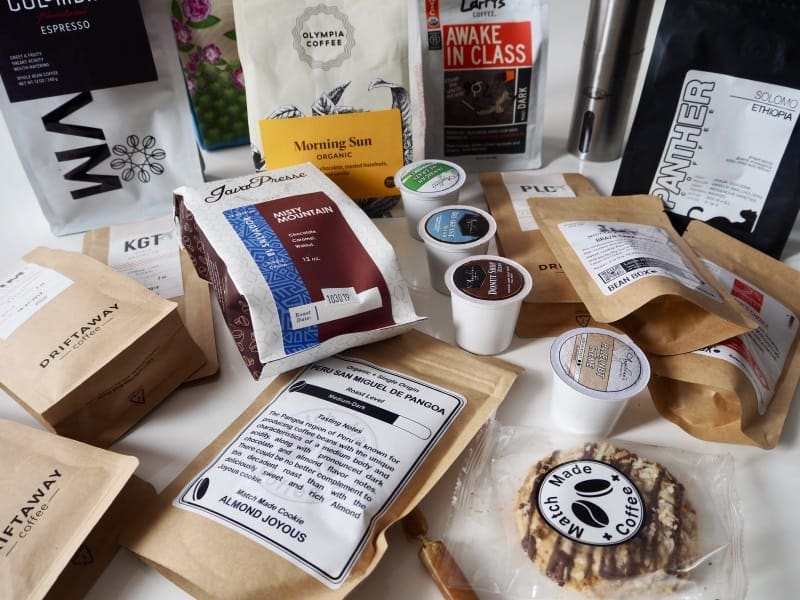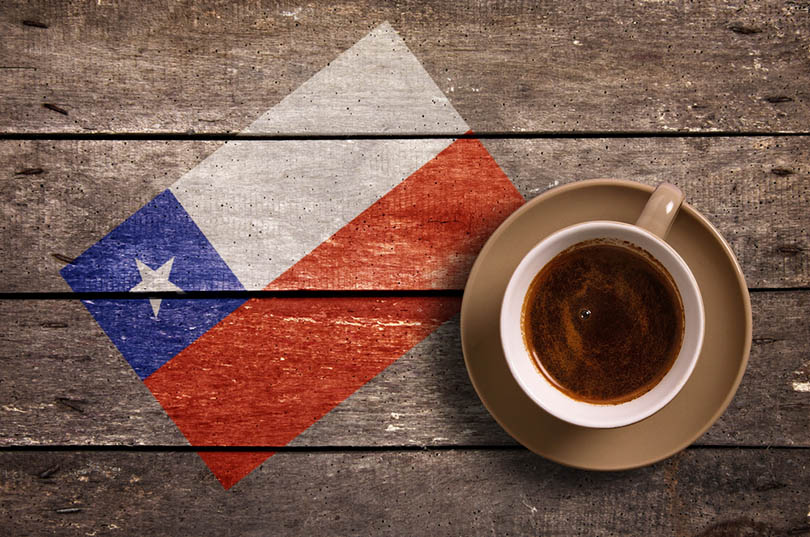
Chile is known for its diverse landscapes, fantastic food and drinks, and the mysterious Easter Island. Amongst the beverages Chile has become known for, Chilean wine, pisco, and craft beers have also become popular with residents and tourists.
Do you know what Chile is not widely known for? Coffee. This may seem odd, especially since the country is surrounded by some of the highest-producing coffee countries in the world. Some coffee enthusiasts want to change that fact. Read on to learn more about Chilean coffee history and culture.

Coffee Beans in Chile
Most coffee beans brewed in the cafés that are found in various cities across the country come from other coffee producers. This is because Chile does not currently grow or produce its own coffee.
Much of the coffee consumed by residents of Chile is instant coffee, typically Nescafe, to be exact. This instant coffee is found in many of the homes around the country and in the various cafes that serve coffee to consumers. So, if you find yourself at a café in Santiago or another city in Chile, you will most likely be drinking instant or imported coffee instead of authentic Chilean coffee—at least for now.
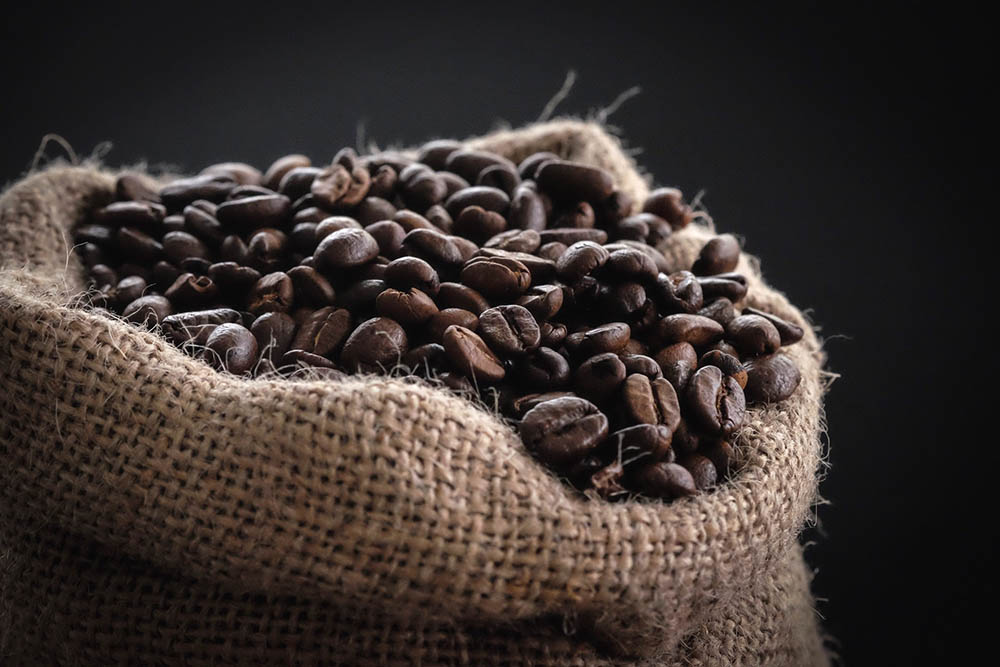
Types of Coffee
While in many of the cafes in Chile, you can find the usual cappuccinos and lattes, the country is known for some specific coffee drinks that are popular amongst the locals.
If you travel to Chile and believe in the old saying, “When in Rome…” you may want to try one of these commonly served coffee drinks:
- Café Espress, which is Nestle Nescafe (instant coffee)
- Café con Leche, which is espresso with frothed milk
- Cortado, which is espresso with less frothed milk
In addition to these traditional Chilean coffee drinks, most cafes also serve espresso by themselves and several other filtered coffee brews. There’s even a tradition in many coffee shops in and around Santiago called Café con Piernas or coffee with legs.
In these shops, you will find many people standing around at standing tables being served by servers, usually female, dressed in mini-skirts and high-heeled shoes. How’s that for a bit of Chilean culture?

About Chilean Coffee
Chile has not historically been known for its coffee production, primarily because of its location along the coastline and lack of higher elevations that make coffee more flavorful. Because of this, there has not been a lot of exposure to the specialty coffees that you can find in other areas of South America.
Most residents of Chile consume quite a bit less coffee in an average year than many of the other top coffee producers, such as Brazil. The coffee that most Chilean residents drink is instant coffee, such as Nescafe.
Though many of the local cafes have successfully brought in imported coffee beans, others have not found it to be as profitable. This is because the taxes and import fees they must pay are astronomical compared to the amount of coffee they sell during the month.
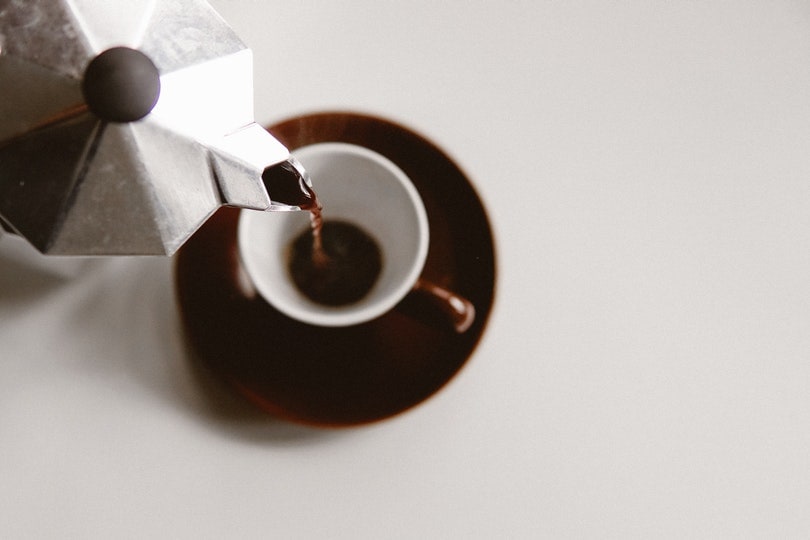
History of Coffee in Chile
When it comes to favorite caffeinated or non-caffeinated beverages in Chile, residents have a more immense love of tea than coffee. This is a result of the English who came to Chile during the 1800s, and brought their love of teas with them. This tradition was passed on to the Chilean locals and became a part of their culture.
Since tea consumption was, and still is, a common tradition in Chile, they have been known for being a more significant consumer of tea in both South America and the world. To this day, many people prefer to sit down to a nice cup of tea in a café rather than a cup of coffee, specialty or not.
Where Does Chilean Coffee Come From?
Because the consumption rates are still so low in Chile, and importing coffee is relatively expensive, many cafes that serve diverse types of coffee are few. Most of the restaurants that serve coffee, especially the specialty kind, are in cities like Santiago since it is the capital city and is easier to transport.
With the average consumption of coffee in Chile being about 750 grams per person per year, it is harder for businesses to get the premium coffee beans that other countries can import.
Even though many vendors can get coffee beans from places like Columbia, Brazil, Peru, and some other prominent coffee-producing countries, the higher quality is low. This is mainly because vendors in Chile are often ordering smaller quantities which do not put them at the top of manufacturers’ lists.
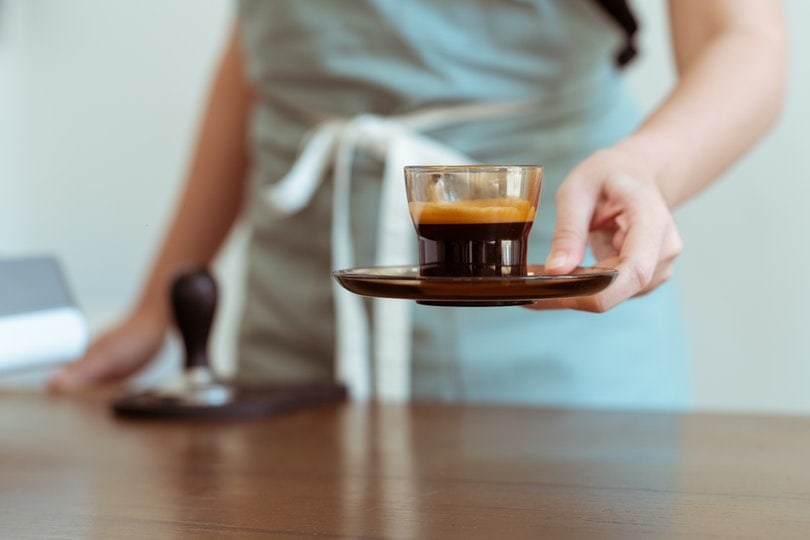
Plans to Grow Coffee in Chile
Although the production of coffee beans in Chile has been nonexistent thus far, there have been efforts to change that by several coffee enthusiasts. The plan includes the proprietor of Bee Coffee Shop, AgroWine Lab, and the Latin Alliance of Specialty Coffee. They have proposed growing specialty coffee beans on Easter Island, or Rapa Nui.
These companies have discovered that Easter Island used to be an area with many coffee farms in the early 1800s. These farms went by the wayside many years ago, although some coffee beans are still known to grow wildly in some areas of the island.
The plan consists of using genetic researchers to study the varieties growing in the wild on Rapa Nui and develop a way to produce more to create specialty coffee that can then be used in the area. If successful, this will create a better and more accessible way for local café owners to bring in many of those specialty drinks their baristas are dying to make!

Tips for Brewing Chilean Coffee
Since most Chilean residents’ drink instant coffee at home and even in some local cafes, brewing coffee is not made on a large scale. However, there are some tips for those who choose to make their Nescafe at home or even when ordering in a café.
- The instant coffee drink, Nescafe, is usually made by boiling water on the stovetop, just as you make tea. Depending on how strong you want your coffee, you can adjust the serving sizes. For example, those who want a small shot of caffeine can use 1–2 teaspoons of Nescafe, and those who need a bigger kick can use more like 3 tablespoons or even more.
- Choosing Café Café in a coffee shop will indicate that you wish to have the straight stuff. If you are at the local café, you will need to be clear on what you actually want. This is because you may get instant coffee when you want brewed coffee.
- When you prefer a lot of milk in your coffee or espresso, you may want to ask for Café con Leche, which lets the barista know that you want the milk. On the other hand, if you only want a small amount of milk, you will want to order a cortado.
Another interesting fact about ordering coffee in Chile that may surprise you is that most coffee shops will also give you a small glass of water along with your coffee order. This is a custom that is done, although water may vary. Many of the Café con Piernas, or coffee with legs establishments, give customers a small glass of soda water along with their coffee order.

Final Thoughts
Coffee culture is broad and international so even if the coffee in Chile is mostly instant, it should not be overlooked. While Chile is not widely known for its coffee varieties compared to European places, its coffee culture is unique and should be experienced if you ever visit.
Featured Image Credit: gmstockstudio, Shutterstock






